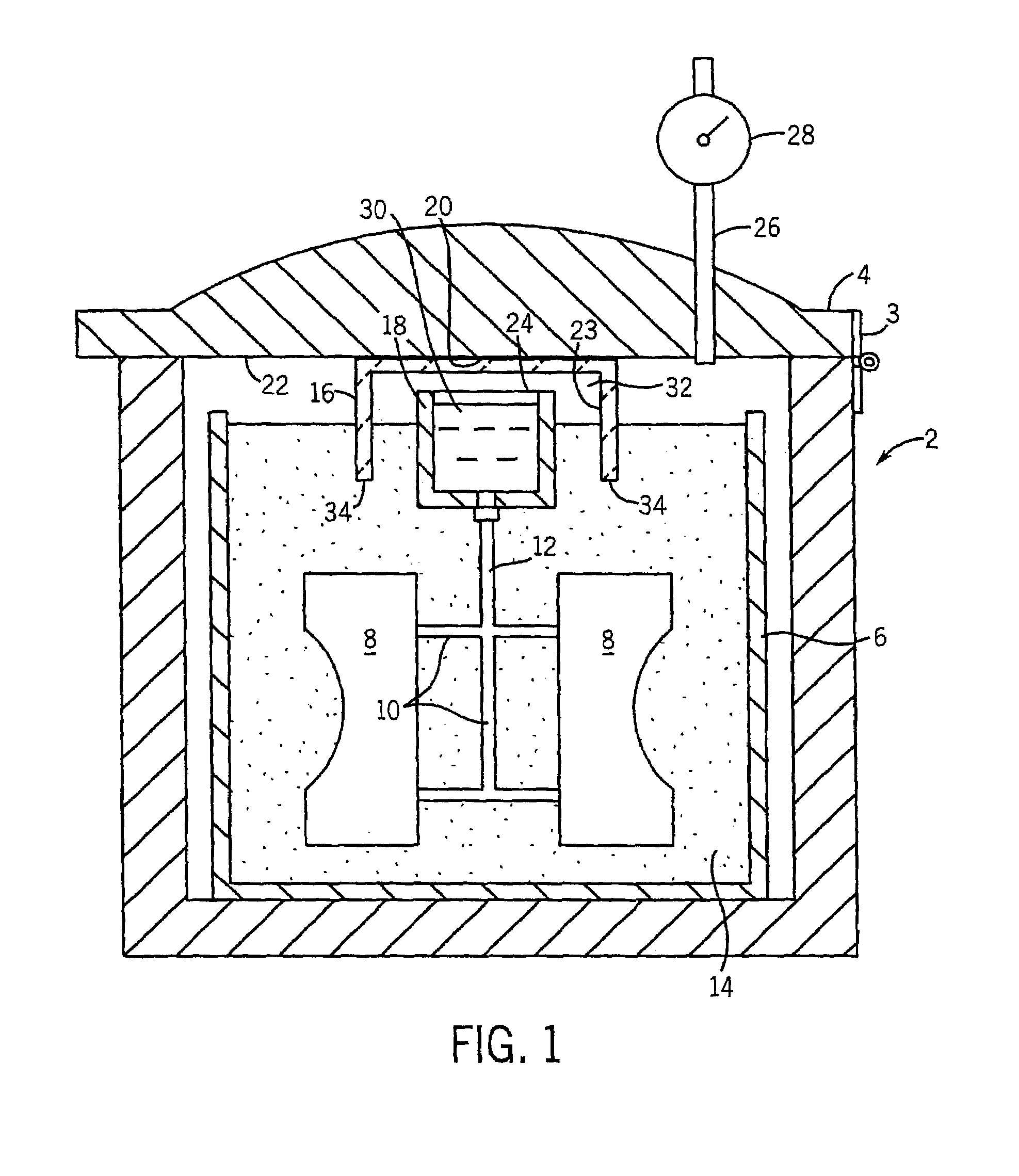Aluminum-silicon casting alloy having refined primary silicon due to pressure
- Summary
- Abstract
- Description
- Claims
- Application Information
AI Technical Summary
Benefits of technology
Problems solved by technology
Method used
Image
Examples
Embodiment Construction
[0017]The present invention discloses a method for producing a hypereutectic aluminum silicon alloy casting, such as an engine block, having refined primary silicon. FIG. 1 demonstrates a casting flask that may be utilized in the current lost foam casting method of the invention. Alternatively, other casting methods, such as conventional sand casting or investment casting, which incorporate the use of pressure may be used in accordance with the current invention.
[0018]With reference to FIG. 1, the method of the current invention contemplates preparing a casting flask 6, the casting flask having a pouring cup 18 to receive a molten metal 30. The pouring cup 18 is attached to a sprue 12 and further to a gating system 10. The gating system, in turn, is connected to a polymeric foam pattern 8 corresponding in configuration to the article to be cast.
[0019]The pouring cup 18, sprue 12, gating system 10, and pattern 8 are placed within a flask 6. The flask 6 is subsequently filled with unb...
PUM
| Property | Measurement | Unit |
|---|---|---|
| Temperature | aaaaa | aaaaa |
| Fraction | aaaaa | aaaaa |
| Fraction | aaaaa | aaaaa |
Abstract
Description
Claims
Application Information
 Login to View More
Login to View More - R&D
- Intellectual Property
- Life Sciences
- Materials
- Tech Scout
- Unparalleled Data Quality
- Higher Quality Content
- 60% Fewer Hallucinations
Browse by: Latest US Patents, China's latest patents, Technical Efficacy Thesaurus, Application Domain, Technology Topic, Popular Technical Reports.
© 2025 PatSnap. All rights reserved.Legal|Privacy policy|Modern Slavery Act Transparency Statement|Sitemap|About US| Contact US: help@patsnap.com



